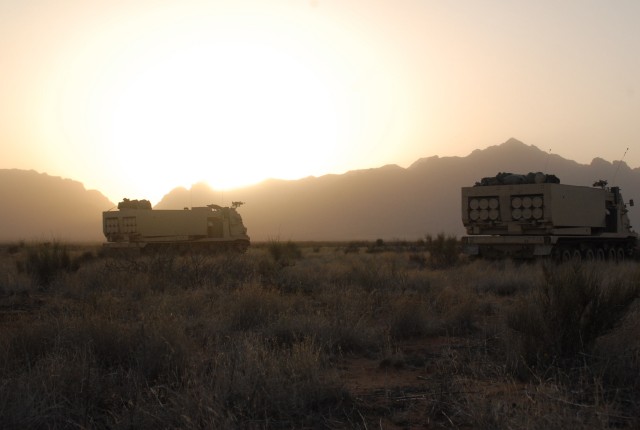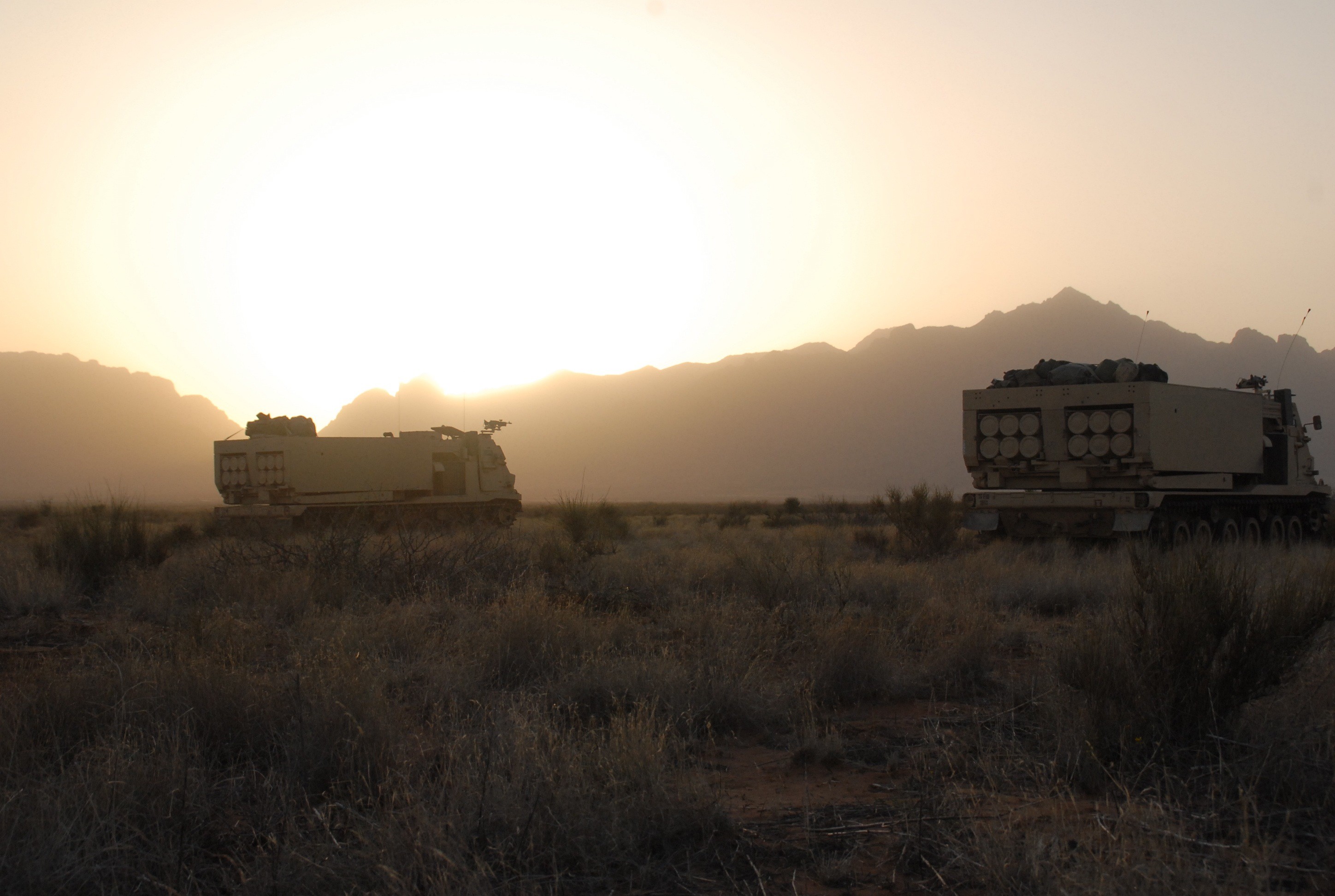There is a vast amount of training space that the Department of Defense has access to throughout the world. Some of this land is covered in foliage, it may be swampy, contain vines that trip up an unsuspecting Soldier late at night during a foot march. We also get to train on an all too familiar piece of earth called the desert. And while it is not terribly difficult to find land to train on, whether it is home at Fort Sill or visiting a training readiness center somewhere on the globe, simulating conditions a Soldier finds himself or herself facing in Iraq or Afghanistan can be a challenge. That is how the Red Dragons found themselves at the unforgiving Dona Ana Range near Fort Bliss, Texas, which spreads vastly in never ending direction all the way to White Sands Missile Range, New Mexico. The 3-13 Field Artillery Regiment of the 75th Fires Brigade, Fort Sill, Oklahoma, needed to put steel on target and heading out west by way of rail, bus, and air, they did just that while conducting Operation Dragon Strike.
"Number one was to exercise all of our battalion deployment related tasks, which the battalion had not done since 2005," said Lt. Col. Andrew Weatherstone, 3-13 FAR battalion commander, explaining the purpose of training at Fort Bliss. "That included rail-loading all of our equipment to another location, download that equipment, then using RSOI (Reception, Staging, Onward movement, and Integration). We used that methodology once we got on the ground to build combat power and conduct pseudo combat operations."
An unfamiliar challenge the Soldiers of the battalion faced was being in a new environment, out of their familiar training area of Fort Sill, reading new maps, staring at new terrain, and dealing with quite a bit of sand and dust. "I've got Soldiers that have been at Fort Sill for so long, (they are so familiar with the land) it really got everyone out of their comfort zone," Weatherstone said.
As a Multi-Launch Rocket System (MLRS) battalion, the opportunity to conduct live-fire operations is much rarer than taking your platoon to an M-16 range. When these guys go to shoot, it is quite the endeavor within itself. According to Lt. Col. Weatherstone, he believes this was the largest movement Fort Sill had pushed out since 2006.
Despite Operation Lumberjack, the now infamous clean-up challenge throughout Fort Sill from the January ice storm creating a slight set back in preparing for the exercise, Red Dragon-6 says the battalion accomplished all of his training objectives; They were able to fire 54 rockets into the New Mexico sky, integrate new technologies the Army is pushing out on the line, and exercise his battalion staff. He also said he was very proud of the 66th Forward Support Company for the fantastic support they provided the battalion over a 50 square mile radius, tracking down Red Dragons to fuel their vehicles and extinguish their hunger. This was even the first time the 66th conducted operations out in the field, which has left a lasting impression on him, and probably a few hundred dusty, but well fed, Red Dragons.


Social Sharing